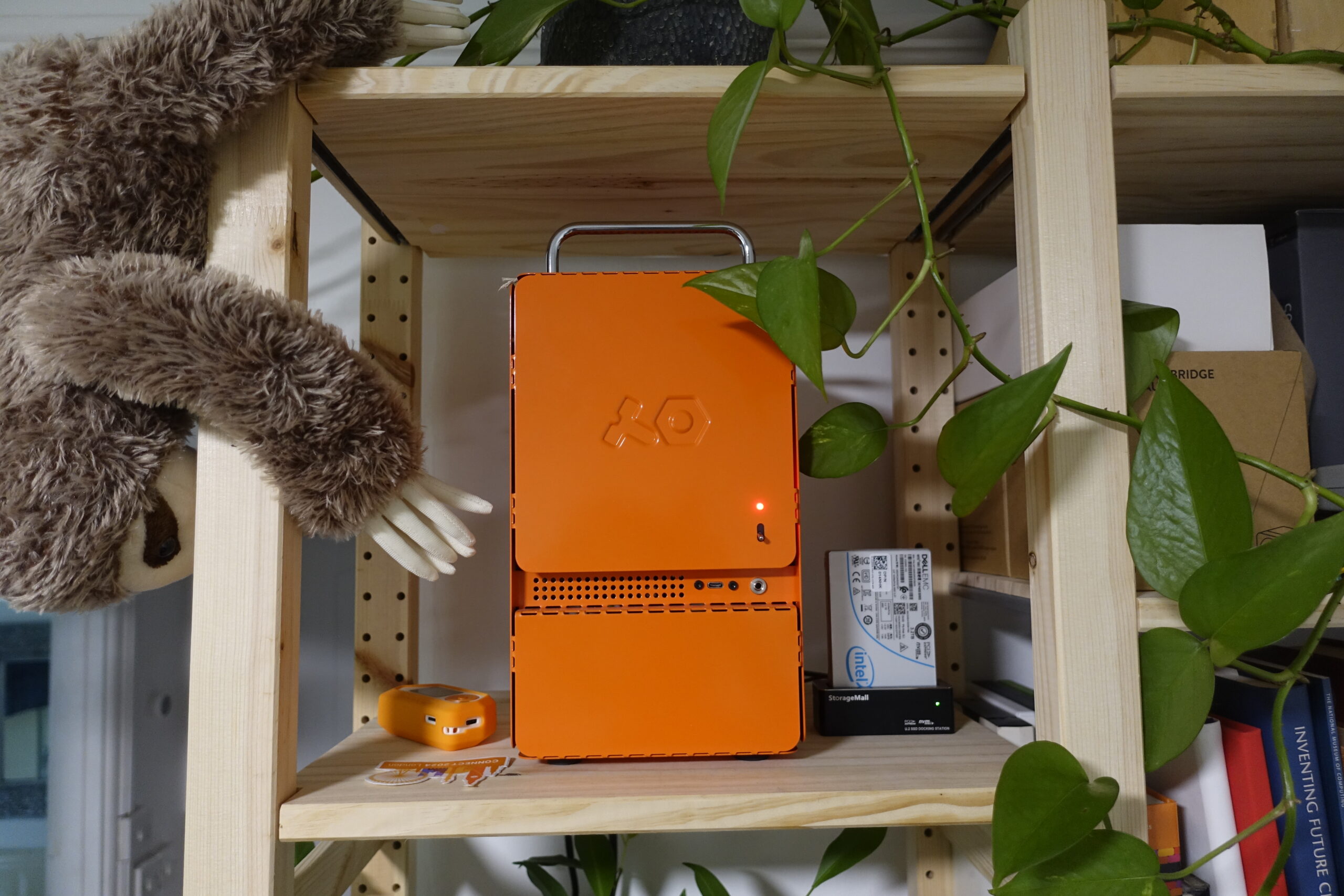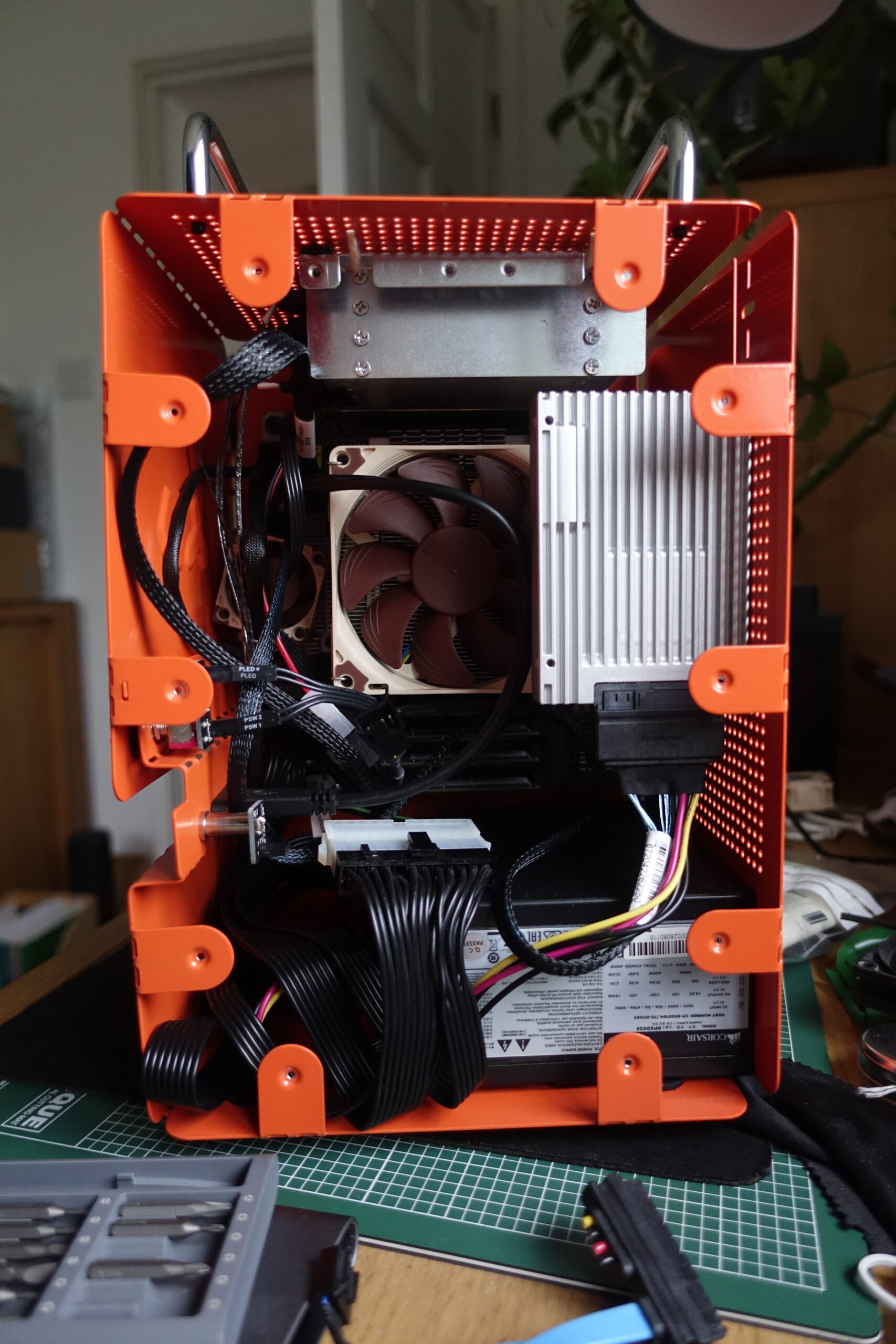After my latest NAS build, which was the v3, around two years ago (and there existed a v4, which was more of a temporary measure) v5 is the device that I’m currently using since Q1 of 2024.
The main difference, aside from moving to an AMD-based platform, was making it all solid-state, meaning there are no mechanical hard drives in the NAS anymore. They did not completely disappear, I moved them to a separate unit that gets synced to the array in this NAS once a week.

So, why the change? Well, the HDD spin-down just didn’t quite work well in TrueNAS Scale and I decided to abandon the idea. This unit has two SSD pools, one RAID5 array with SATA drives for irreplaceable data and one large NVMe drive for everything else.
The internals:
- ASRock Rack X570D4I-2T, which is a nice ITX board with 10GBase-T
- AMD Ryzen 5700G
- 4x32GB DDR4 RAM
- One 11TB Micron 9100 Eco NVMe SSD
- Four 1.92TB Micron 5100 SATA SSDs
- A Corsair 450W SFX PSU
This gives me a system that’s practically inaudible at idle, despite having three fans installed, one 92mm on the CPU, one 40mm on the chipset and an 80mm case fan as well. If I do something that’s a little more intensive, such as 4K HDR encoding using Jellyfin, they do spin up to noticeable levels, but they are still not unpleasant. The CPU is undervolted and I run it at slightly lower clockspeeds. There are many guides for this, so I would rather suggest to search for it instead of detailing exactly what I did.
The motherboard does have an IPMI interface, which adds a few watts to the power envelope, but remote management is always useful. The integrated Intel X550 NIC is a nice touch and the two Oculink ports can be used either as four SATA ports or four PCIe lanes for a U.2 drive, or other PCIe device. Notably, the iGPU of the 5700G does not get a video output, the VGA port is wired to the IPMI, but it is NOT disabled and can be used for video transcoding, which is the reason why I picked this chip over a 5800X or really any other CPU that was lacking the iGPU. And since the 5700G is essentially a mobile chip, it does use slightly less power due to its monolithic design. The downside is that I only get PCIe 3.0 connectivity. But then, I won’t be using it here. It also affects the connection to the X570 chipset, as it will run at half the speed, but that’s fine too. It’s still a four-lane 32GT/s or 4GB/s connection.
It runs Fedora Server, which is really simple to manage with Cockpit and it hosts a number of applications that run in containers, such as Immich, Calibre, Jellyfin, Logitech Media Server, Tandoor and a number of others. Some SMG shares are also presented on the network, which is where the 10G network interface is useful, since the SSDs can easily saturate it.

Well, that’s it. I thought it was worth a couple of lines, since I found that this was a rather efficient, but powerful configuration.
Leave a Reply